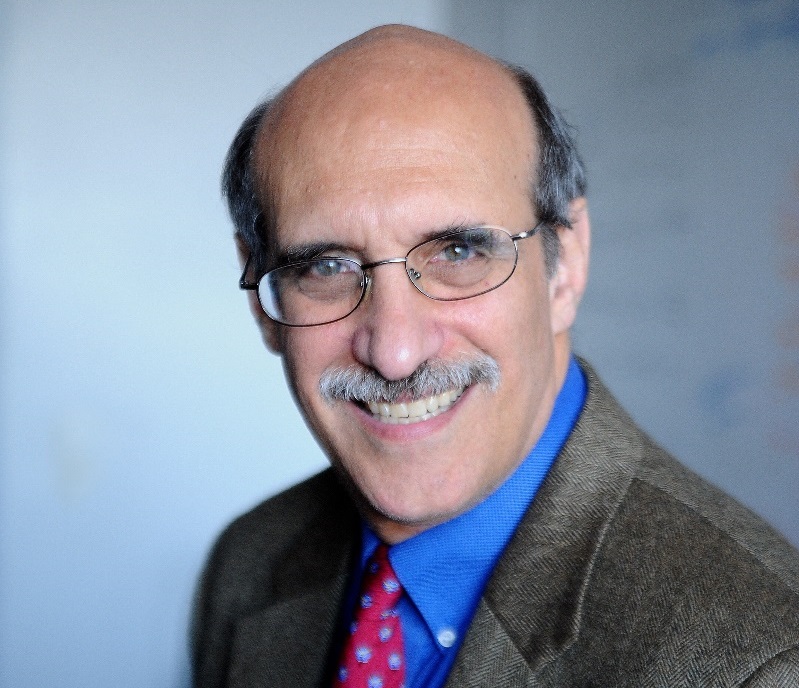Nobel chemistry laureate to visit Feb. 11-12

Martin Chalfie shared the 2008 Nobel Prize in chemistry with Osamu Shimomura and Roger Tsien.
Martin Chalfie, winner of the 2008 Nobel Prize in chemistry, will visit Lehigh on Wednesday and Thursday, Feb.11-12, to speak about his research into nerve cells and sensory cells.
On Wednesday, Chalfie will give a public lecture titled “GFP: Lighting up life” at 4:10 p.m. in Packard Lab Auditorium. On Thursday, he will give a seminar titled “Mechanosensory transduction and its modification in Caenorhabditis elegans” at 1:10 p.m. in Room 303 of Whitaker Lab.
The events are being sponsored by Lehigh’s HHMI (Howard Hughes Medical Institute) program through the department of biological sciences.
Chalfie, University Professor of Biological Sciences at Columbia University, was awarded the Nobel Prize for introducing the Green Fluorescent Protein (GFP) as a biological marker. He shared the prize with two other scientists, Osamu Shimomura and Roger Tsien.
Naturally occurring in certain jellyfish, GFP glows bright green under ultraviolet light. Chalfie came up with the idea to use GFP to mark cells in 1989 while he was attending a lecture about light-producing animals. One of his first GFP experiments involved successfully coloring six cells of C. elegans, a transparent roundworm that he has continued using in his research.
The revolutionary discovery has allowed scientists to noninvasively observe biological events in living organisms by simply shining a blue light. As a result, researchers have been able to study processes that were previously invisible, leading to possible new treatments for diseases such as cancer, Alzheimer’s, diabetes and AIDS.
GFP also facilitates the detection of arsenic in drinking water and of biological agents commonly used in terrorist attacks.
GFP has shown up in popular culture, too. In 2000, it was used by artist Eduardo Kac to create a “work of art” known as GFP Bunny, a rabbit that glowed because of the introduction of the protein into its genome. A few years later, the opening credits of Ang Lee’s 2003 movie “Hulk” seemed to give GFP credit for the superhero’s iconic green color.
In his research, Chalfie has sought to answer two distinct biological questions: How do different types of nerve cells acquire and maintain their unique characteristics? And how do sensory cells respond to mechanical signals?
During his 2008 Nobel lecture, Chalfie acknowledged that sharing the award with Shimomura, who isolated GFP in 1962, and Tsien, who extended the color palette of the protein, was a testament to how science is a process that involves the collaboration and ingenuity of researchers from all over the world. Shimomura is a Japanese organic chemist and marine biologist. Tsien is an American biochemist.
“In a real sense, GFP is a wonderful metaphor for our work as scientists,” Chalfie said. “Just as GFP and other fluorescent molecules absorb light of one wavelength and convert it to light of a different wavelength, we, too, take in what others have learned about the world, add our observations and insights, and produce additional gains in human knowledge.”
In 2004, Chalfie was elected to the National Academy of Sciences, whose members advise the government in matters related to science. Members are chosen based on outstanding achievements.
His paper “Green Fluorescent Protein as a Marker for Gene Expression,” published in Science in February 1994, is reported to be among the 20 most frequently cited papers by molecular biologists and geneticists.
Chalfie earned his A.B. in biochemistry and Ph.D. in neurobiology from Harvard University. He completed his postdoctoral research with Sydney Brenner at the MRC (Medical Research Council) Laboratory of Molecular Biology in Cambridge, England.
Story by Rosa Rojas
Posted on:

